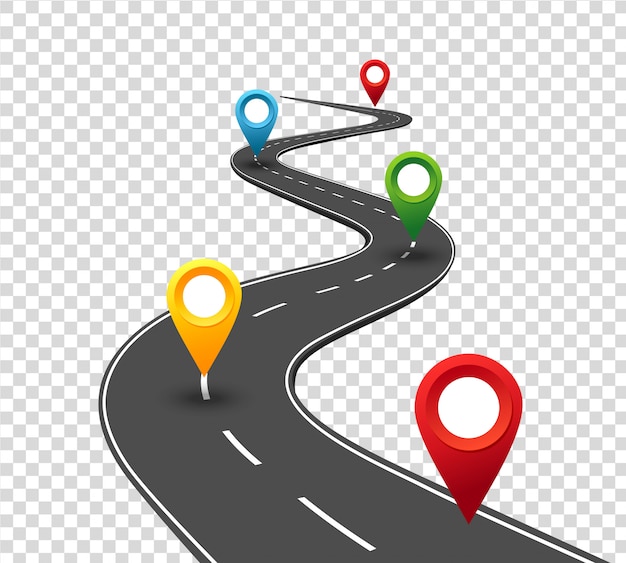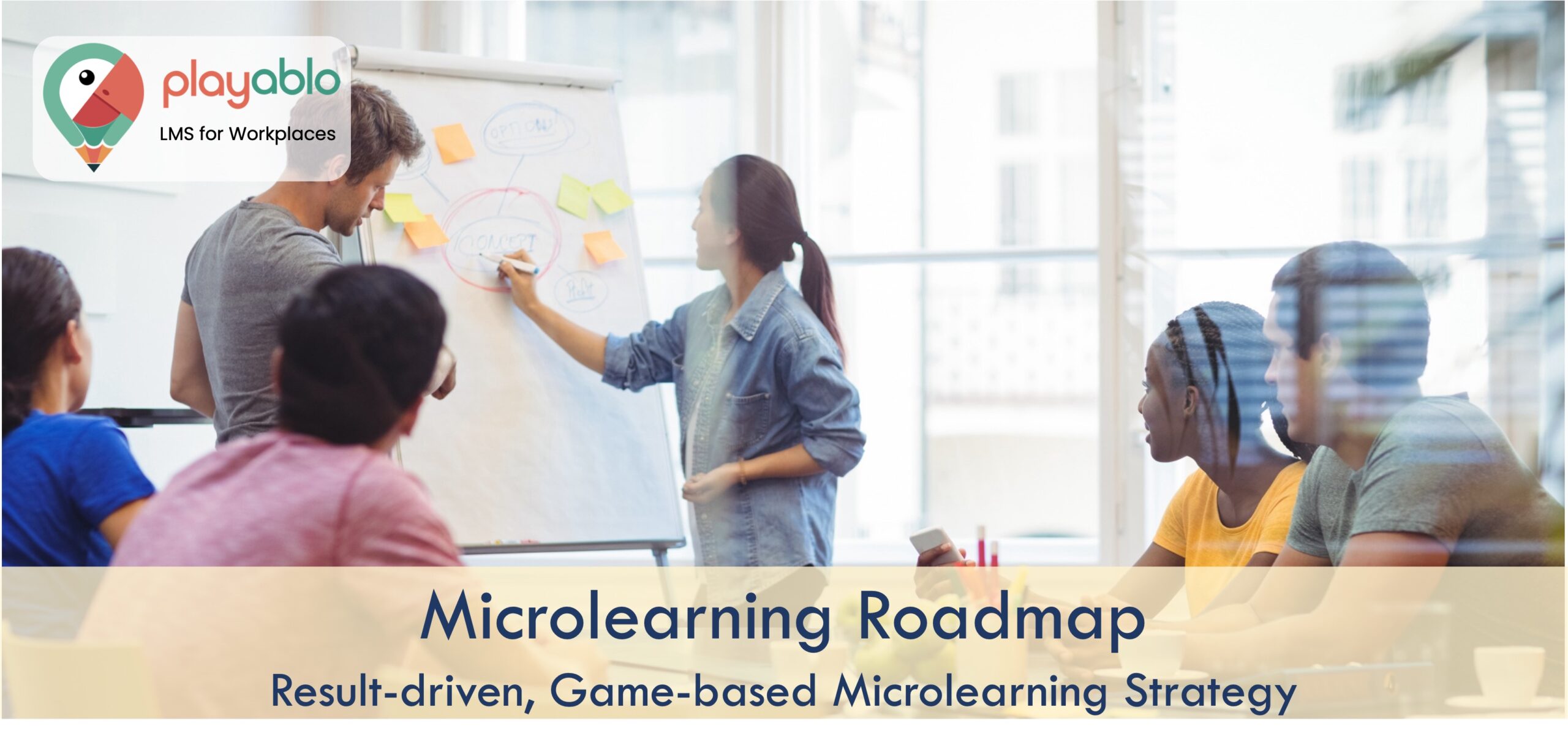Organizational training techniques and the microlearning roadmap have been driven by the concept of sophisticated games and learning sciences in educational contexts. We can utilize gamified microlearning to improve both cognitive and instructional skills. It entails employing various gamification techniques to achieve effective knowledge transfer.
Learning isn’t just about rote memory. Learning doesn’t always have to be boring; it may be more engaging by applying knowledge and skills to real-world situations or placing the practical in a gamified digital setting.
The gamified microlearning training is designed to set training objectives such as — speeding up learning, improving retention rates, and providing a more enjoyable environment.
Game-based microlearning has altered the emphasis of training away from traditional lectures and written communications and toward a more participatory approach to learning that assists participants in mastering skills and working toward their aims and priorities. Scores, leaderboards, and certificates encourage a competitive spirit to complete training objectives and a sense of accomplishment in the workplace.
This article will discuss the advantages of game-based microlearning and how it may help organizations bridge gaps — to develop a structured and result-oriented microlearning roadmap. It will also share tips to improve performance and the essential characteristics of gamification programs. There shall also be a focus on the several excellent practices that every learning instructor should follow while developing a gamified microlearning roadmap to achieve training objectives.
Table of Contents
What is Gamified Microlearning?

Before discussing the advantages of game-based training, we must first define the term. As the name implies, it is a microlearning roadmap or online training journey with clearly defined training objectives. The subject material is created so that gamified learning strategies assist individuals in grasping the concepts.
With a gamified microlearning roadmap, employees can enhance their thinking skills, decision-making processes, market research, problem-solving, mentorship, teamwork, and much more. Such a roadmap can mimic today’s world in disciplines like sales, training and development, safety and health, cultural transformation, or compliance. This aids firms in preparing personnel to meet training objectives, bridging potential risks, and improving performance.
A certain amount of involvement and interaction is required to create a productive environment inside a team. Businesses may drive employees to remember whatever they enhance and develop company culture by tapping into the spirit of play. As you can see, there are numerous advantages to incorporating gamification into your learning process and microlearning roadmap.
Ad: PlayAblo’s Enterprise-Grade Micro-Learning platform is built for millennial learners. Micro-Learning, along with assessments and gamification features, ensures learning outcome measurement and sustained engagement.
Find out more and request a custom demo!
What Are the Elements of a Gamified Microlearning Roadmap?
When we study in small chunks, we call it microlearning. Learning becomes more manageable, and you may do things slowly. Learning practical knowledge via a gamification framework and clearing several stages that you are recognized for is what a game-based microlearning roadmap is all about. As a result, educators develop training materials to support such a learning paradigm and accomplish training objectives.
An ideal team is formed when the power of gamification and microlearning are combined. In a perfect world, users would be motivated simply by learning. However, more often than not, more encouragement is required. This is where game-based revenue comes into play. The game mechanics emotionally connect players to learning and reward them for each accomplishment.
The following are some significant elements of a game-based microlearning roadmap:
1. User Participation and Completion

Gamification is regarded as one of the most effective methods for increasing user participation and connection. That’s because the learning courses and challenges are sent in smaller chunks rather than everything at once, ensuring that the user does not receive an overload of data.
Also, regarding engagement and competitiveness, training courses that provide a balance between input from real people (trainers, managers, etc.) and an automatic feedback system are by far the most effective.
2. Enhanced Retention and Recall Rates
The notion that microlearning is broken down into little chunks so that the learner isn’t overburdened isn’t the only rationale for why a game-based microlearning roadmap has a greater retention rate.
Each piece of knowledge presented at each process level is linked to the next, requiring the user’s recollection while also being light on the brain.
Thanks to the narrative, human connection, and constant trainer comments, the player can recall the knowledge learned during learning.
3. Performance Indicators
A microlearning roadmap based on games solely relies on how well your learners perform. The user can learn anytime they want and on any device they choose. It allows participants to be in charge of their educational process and accomplishments.
4. Relatable Scenarios
Each trainee is concerned about the training’s final consequence and how the hours spent will benefit their performance at work. The appearance and experience of a gamified program are significant, but the most crucial factor is the employees’ learning results.
A game-based microlearning roadmap gives users instructions relevant to their professions and necessary learning. Storytelling is used in the gamification process because it generates an emotional experience, and the human brain remembers emotional scenarios better and can connect to the course and its obstacles.
5. One Learning Goal in Each Module
Microlearning is a single-goal approach to learning that makes learning easier for millennials and Gen Z individuals with limited attention spans. This approach assists them in remembering information and applying it on the job. Each gamified session in microlearning only provides the fundamentals of a specific topic, not every last detail. This allows training to concentrate on the most critical aspects, such as creating clear objectives with explicit instructions.
6. Gamified Assessments

Human beings are forgetful by nature, and 50% of whatever they acquire during training is lost. On the other hand, Gamified assessments avoid this and contribute to overcoming the forgetting curve by ensuring that what they learn throughout training is remembered through an exciting and dynamic gamified learning platform.
Such game-based evaluations fill in the gaps in knowledge by offering small bits of material and assessments that the learner may do at their own pace. This approach appeals to current professionals who aren’t fond of lengthy evaluations. However, healthy peer rivalry motivates individuals to learn quickly while retaining the material.
How to Incorporate Gamification in Your Microlearning Roadmap?
There are some “Do’s and Don’ts” to consider when establishing a microlearning roadmap complete with gamified modules for employees to develop an efficient learning resource:
The List of Do’s
- Use videos whenever possible to learn quickly. Today’s employees would rather watch clips with visuals and animations than read dense texts that they can’t focus on.
- Give points to users for each video and accurate response.
- Once the learner earns a minimum score, the next level will be unlocked.
- Give outstanding achievers badges or other forms of acknowledgment. Post their names on public leaderboards so that their peers can see them and compete.
- For those who aren’t doing their best, provide more training and prompt suggestions on how to improve.
- Create gamified lessons that are mobile-friendly and easy to access while working.
- Ensure your game-based programs are “auto-saved” if you have to leave due to a phone call.
- Use music and media at the appropriate times, as this is an essential component of the gamification experience.
- Always provide timely, actionable feedback that employees can apply to their work.
The List of Don’ts
- When employing scenarios and storytelling, avoid circumstances that need obvious choices or narratives that the employees will not relate to. When the stories are about their employment and work environments, and their position is reflected in the scenario, the user will be attracted to the learning process.
- Avoid using small fonts that compel the viewer to zoom in when studying on the phone.
- Avoid using flashing visuals, vast blocks of text, or scrollable graphs.
- Avoid using multimedia content that is only accessible on specific devices.
- Don’t overwhelm the learner with too many learning objectives. Keep it straightforward.
- Please don’t interfere with the game; instead, let the player find their road to victory.
How to Design a Gamified Microlearning Roadmap?

Trainers must employ alternative solutions to supplement a webcast or an in-person class to stay up with current learners’ expectations and increase the quality of teaching and learning, as we mentioned. Online technologies have altered the way training is given in today’s world. With this in consideration, you can construct a game-based microlearning roadmap. Here are a few suggestions and practices to consider:
Ad: PlayAblo’s Enterprise-Grade Micro-Learning platform is built for millennial learners. Micro-Learning, along with assessments and gamification features, ensures learning outcome measurement and sustained engagement.
Find out more and request a custom demo!
1. An Engaging Beginning
We live in a time when information is readily available, and we are constantly inundated with it. We readily filter out data in this situation and don’t pay attention to something for over 30 to 60 seconds. As a result, eLearning designers must not only construct digital learning that assists learners and employees in acquiring new information and developing abilities but also apply tactics in online courses that keep learners involved, inspired, and interested all through the program.
Storytelling is one method of capturing a person’s attention. You might start your scenario with a prologue (animated scene or video clip) that explains the character’s behaviors and their reasoning. At the end of the cut-scene, you can switch to a third-person or first-person perspective of the character or give the learner screen choices like audio, play, resume, and settings.
2. Grown-up Learning Preferences
When creating a microlearning roadmap, keep in mind that it is game-based learning, not a game and that it should follow adult learning preferences. While fun and participation are critical aspects of this learning activity, they must not take away from the primary goal of learning. You must use the game elements so that adult learning principles are maintained. The players should be allowed to navigate the gaming experience, make decisions, and achieve specified goals that will give them meaningful and helpful knowledge throughout their gamified journey of learning.
3. Motivating Gamified Elements
Badges, milestones, points, trophies for their persona or avatar, and leaderboards are all game aspects that encourage participants to play more, which implies more learning. Including these game aspects in your microlearning roadmap is critical for a successful learning trip.
Another option to keep them motivated is to give the top-ranking leaderboard members something concrete each month or so. People can use this method to bring their points to life by going to a store and purchasing real-world goods with points. This might provide participants with immediate gratification. The leaderboard takes on a life of its own, becoming more than just a virtual representation of reality.
4. The Risk Factor
Humans, according to behavioral psychologists, prefer taking risks. They adore it to the point where it inspires them and can even become addictive. As a result, you could use this motivating force to your benefit and add risk to your game-based microlearning roadmap. Give the players situations with real consequences or queries where they can win big or lose everything (badges, memorabilia, points, or even their spot on the scoreboard) depending on their performance and choices.
5. The Challenge Aspect
People lose interest in things that aren’t hard, and they also want to be appreciated. It would be best to incorporate these aspects of adult learning into your gamified microlearning roadmap. Making a game trivial to finish ignores the element of challenge and insults the player’s intelligence. While the gameplay shouldn’t be so complex that the player does not try to finish it, it should typically contain stages, scenarios, exercises, and questions that need additional effort on the person’s part and that they should try several times before clearing.
6. The Right Elements
Less is more with gamification. Including unnecessary aspects in your gamification would obstruct the learning process. Including specifics linked to the actual job and taking advantage of each element in mind when creating material for your gamified microlearning roadmap leads to a more successful learning experience.
The components like content, badges, point systems, gaming levels, and rewards should also work together to maximize performance. The emphasis should not only be on high leaderboard scores but also on learning practical knowledge. Including flow diagrams and graphics in your presentation can help you remember important details and learning goals. You may also include problems or mini quizzes in your microlearning roadmap from time to time to help strengthen the learning.
Conclusion
Incorporating game-based strategies in your microlearning roadmap and L&D plan is vital, considering the evolving times we live in. While implementing the same in your organization, you can take the help of the tips mentioned above. And if you have any further suggestions, you can let us know in the comments section below!
Ad: PlayAblo’s Enterprise-Grade Micro-Learning platform is for the modern corporate learner. Micro-Learning, along with assessments and gamification features, ensures learning outcome measurement along with sustained engagement.
Find out more and request a custom demo!







Comments are closed, but trackbacks and pingbacks are open.